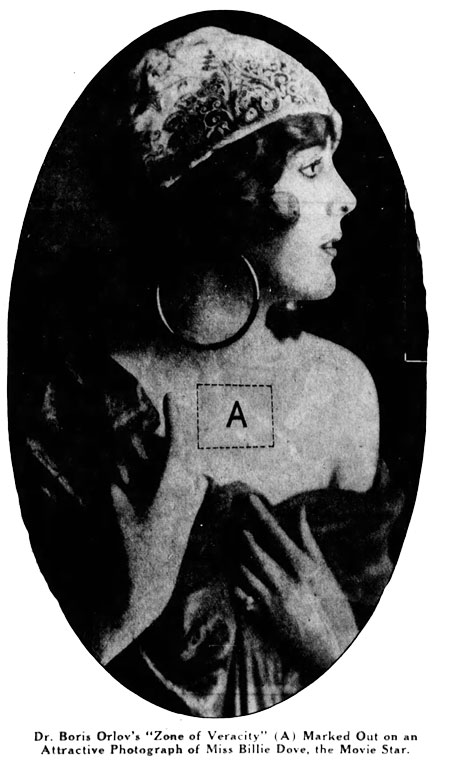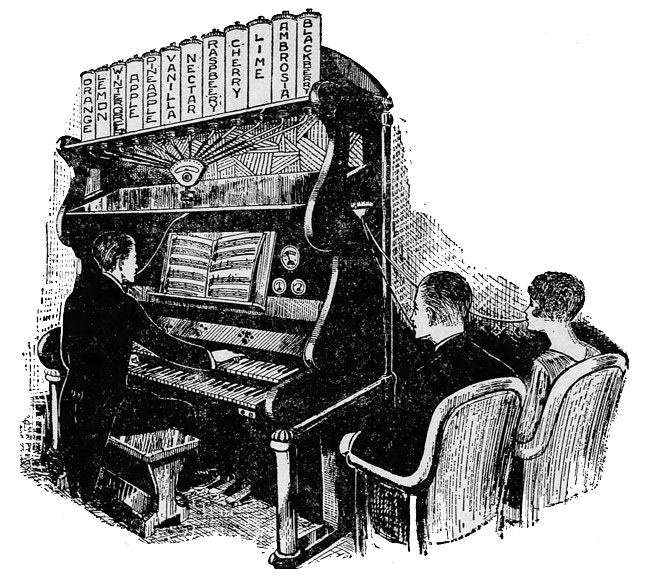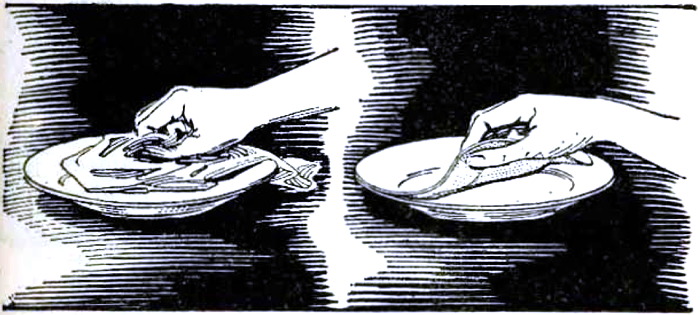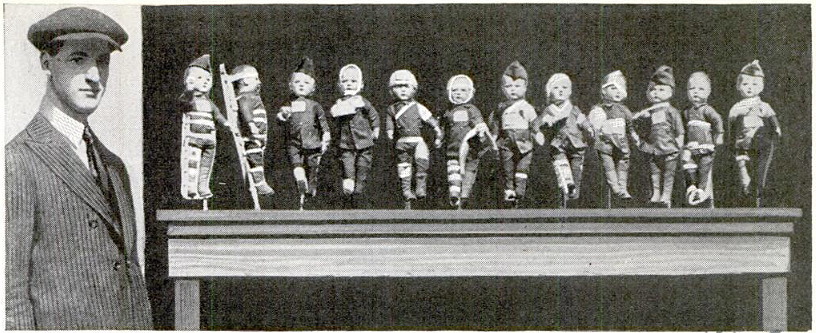1920s
Odd Ducks: Unusual Aircraft from the Movietone Collection, 1921-1934
Posted By: Paul - Tue Jan 21, 2020 -
Comments (2)
Category: Eccentrics, Inventions, Air Travel and Airlines, 1920s, 1930s
The boy who was trained to be an astronaut
Jeanne Granveaud wanted her six-year-old son Paul to be an astronaut who would fly to the moon. So she began training him for this role. What made this unusual is that she came up with this plan back in the 1920s.
Some details about little Paul's training from the San Francisco Examiner (Aug 28, 1927):
So far as the hardships of a moon voyage can be foreseen, young Paul will be seasoned to them in advance. His scientific training will include the parts of astronomy which he must learn in order to navigate his queer craft when it gets well out in space. Every fact that terrestrial scientists can learn about the moon will be written down, not in any book for Paul to take along and read, but in a book which he cannot forget or leave behind. These facts will be poured into his brain. Better than an ordinary child knows the alphabet or the multiplication tables, Baby Paul Granveaud will learn to know each scrap of fact about the moon that the astronomers of the world can supply.
The mother's plan seemed incredibly eccentric to people in the 1920s, but in hindsight, her timing was pretty good. Paul was born in 1921, and Alan Shepard, who went to the moon in 1971, was born just two years later, in 1923. So it wouldn't have been impossible for Paul to have grown up to become a lunar astronaut. If only he had been born in America rather than France.

Edmonton Journal - Nov 12, 1927
Posted By: Alex - Mon Jan 13, 2020 -
Comments (1)
Category: Spaceflight, Astronautics, and Astronomy, 1920s
The Zone of Veracity

From the San Francisco Examiner - June 5, 1927:
The latest researches have been made known by Dr. Boris Orlov, a Russian psychologist, now living in Paris. Professor Orlov asserts that modern fashions, by exposing women’s necks, have incidentally exposed their minds. When a woman is not telling the truth, he insists, she will blush in the area just below the breast bone.
Dr. Orlov calls this telltale area the “zone of veracity,” and his book, “La Pseudologie Humaine Normale et Anormale,” offers a number of other interesting tips for the casual detection of untruthfulness. This “zone of veracity,” Dr. Orlov says, is a sort of window through which certain well-disguised feminine mental processes may be seen…
“When a woman lies,” Dr. Orlov continues, “there is inevitably a nervous tension inside her. During the mental stress of lying, this tension is communicated to the vasomotor nerves which control the arteries and capillaries in the skin.
“Blushing in any part of the body is produced by an increased flow of blood into the capillary vessels serving the parts where the blush extends. The area affected is not only reddened, but there is a perceptible increase of heat there.
“The interaction between mind and body is close. A nerve filament from the sympathetic system lies along the sheath of and parallel with each artery and capillary, controlling the expansion and contraction of the muscular coat of the vessel. This is the vasomotor nerve. The mental agitation produced by lying causes temporary vasomotor paralysis and an ensuing rush of blood into the capillary vessels of the skin, which we call blushing.
“A self-controlled deceiver can inhibit blushing in the face. But the feminine fibber’s throat, her upper thoracic area, will visibly palpitate and redden. A throbbing or fluttering will be seen in the area about the breast bone. The blushing will usually cover a space two to three inches in diameter. In many cases, this section of the throat or bosom will redden though not a trace of a blush will color the cheek.”
Posted By: Alex - Thu Jan 09, 2020 -
Comments (3)
Category: Lies, Dishonesty and Cheating, Psychology, 1920s
The Taste Organ

Decatur Herald - Sep 14, 1926
Posted By: Alex - Thu Jan 02, 2020 -
Comments (0)
Category: Food, Inventions, 1920s
Predictions for 2020 from 1920
Published in the Dayton Daily News - Sep 29, 1920. What stands out to me is that the author believed that entirely new forms of power would be in use in 2020... and while wind, solar, and nuclear do provide some power nowadays, the old forms of power (coal and gas) still dominate. So the author was too optimistic about the pace of change.Some one has suggested that the air and the water will furnish us our methods of heat and power in 2020. No one can doubt but that the flying machines of a new and important type, not known today, will be in general use a century removed.
Airplanes probably will be driven by electricity with storage batteries providing the power. Gasoline is not likely to be utilized in 2020. The fuel problem will be solved in a far different way than it is solved now. The air will provide an immense motive power for various things. The sun, doubtless, will be called upon to furnish the greater portion of the heat utilized by manking. Out of the waters on the face of the earth something will be developed for the benefit of the human family.
The automobile will be succeeded by something entirely different. Horses and cows may not be known.
Students of the human race have told us that the primitive man, like the primitive animal, was great in stature. The bones that the scientists have unearthed have verified this. Maybe human beings a century hence will become either much smaller of much larger than they are today. Everything will have changed.
A century past has given us an unlimited amount of great inventions, the sewing machine, electric irons, electric washing machines, airplanes, automobiles, radium and electricity. The next 100 years will see this process of enlargement carried on until it reaches even greater heights.
It may not be a cheerful picture to paint, but most of us will not be here to see the year 2020 roll around. But we can rest assured time will bring changes and improvements. This is a progressive earth and progress has marked each succeeding year since the beginning.

Posted By: Alex - Wed Jan 01, 2020 -
Comments (8)
Category: Predictions, Yesterday’s Tomorrows, 1920s
Dishes cleaned by peeling
Someone obviously spent time to develop these peelable plates. So I wonder what advantage they saw in sticking the plates together, as opposed to just having a stack of cheap, paper plates?

Posted By: Alex - Tue Dec 24, 2019 -
Comments (5)
Category: Inventions, 1920s
Fly-Operated Turtle
Patent No. 1,591,905, granted to Oscar C. Williams of San Diego, CA in 1926, described this curious device.It was a toy turtle. Its body was made of wood or aluminum, while the head, legs, and tail were made from lightweight cork. The user was supposed to insert several flies into the hollow body of the turtle. Their agitations once inside, as they sought to escape, would then cause the movable parts of the turtle to wag from side to side, as if the creature was alive.
I can see several drawbacks. First, you would have to catch some flies and maneuver them (alive) into the turtle. This was done by squeezing them through the leg hole. Handling a fly in this way seems like it could be a challenge.
And once in there, I imagine you'd have to wait until the flies died to get them back out. So, essentially, it was a fly torture device.

Posted By: Alex - Sun Dec 22, 2019 -
Comments (4)
Category: Insects and Spiders, Inventions, Patents, Toys, 1920s
Mining Accident Dolls
In 1922, the Bureau of Mines created a series of educational dolls to illustrate common mining injuries, and how they should be dealt with in an emergency. The dolls were exhibited at various mining centers. According to Popular Mechanics (Sep 1929) the dolls were also "intended to serve as a safety warning.”As far as I know, there's never been a Mining Accident Barbie (or Ken).

Posted By: Alex - Tue Dec 10, 2019 -
Comments (1)
Category: Accidents, Toys, 1920s
How much total weight does it take to play a song on the piano?
Pianist Moissaye Boguslawski (popularly known as 'Bogie') calculated in 1927 that "in the four minutes it took him to play Rubenstein's 'Staccato Etude' he exerted force of 14,700 pounds." Apparently he then used this bit of esoterica to impress the ladies.The wikipedia entry on Boguslawski notes, "Boguslawski was known for skillfully attracting media attention. A 1936 piece in TIME magazine said of him, 'When straight news about himself is scarce, 'Bogie' is likely to come forth with such a project as his proposal to promote world peace through voice culture, since animosity arises when unpleasant tones are heard.'"

Muncie Evening Press - Aug 11, 1927

Ithaca Journal - Nov 23, 1926
Posted By: Alex - Wed Nov 27, 2019 -
Comments (1)
Category: Music, 1920s
Dog-Collar Engagement Rings
An unusual fad, as reported by the San Francisco Examiner, June 19, 1927:The custom was started by a young woman in one of the college sororities and it spread rapidly. It was generally believed to be something entirely new in the way of betrothal tokens, but had the young woman been a careful student in her history class she would have known that the fad she started was an old one long before the Christian era was born. Jeweled anklets have been discovered in the cinerary urns of the ancient Greeks, with inscriptions which indicate they were tokens of engagement. Bracelets were also common in all ages as tokens of betrothal...
The principal objection to the dog-collar engagement token around the leg seems to be, "What's the use of wearing an engagement ring without anybody seeing it?" To which the answer is, "Nowadays a ring worn about the leg can easily be seen with the skirts of women growing shorter and shorter."
I can think of a few more objections a bride-to-be might have, other than that the dog collar wouldn't be visible.

Posted By: Alex - Tue Nov 26, 2019 -
Comments (6)
Category: 1920s, Weddings, Love & Romance

| Who We Are |
|---|
| Alex Boese Alex is the creator and curator of the Museum of Hoaxes. He's also the author of various weird, non-fiction, science-themed books such as Elephants on Acid and Psychedelic Apes. Paul Di Filippo Paul has been paid to put weird ideas into fictional form for over thirty years, in his career as a noted science fiction writer. He has recently begun blogging on many curious topics with three fellow writers at The Inferior 4+1. Contact Us |




